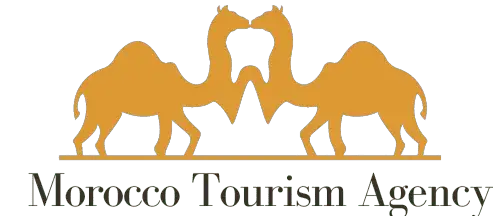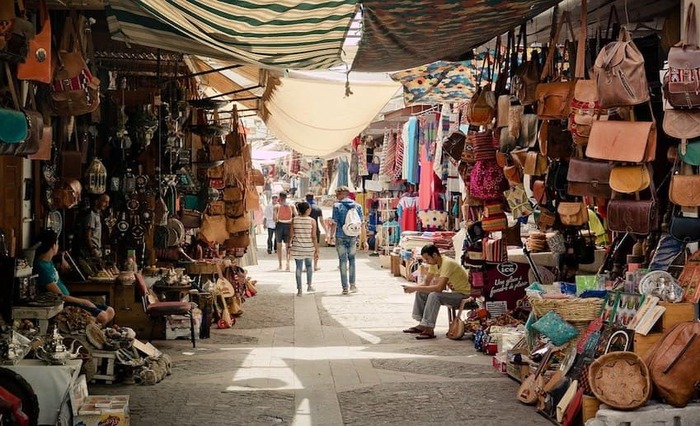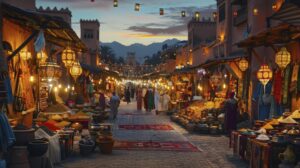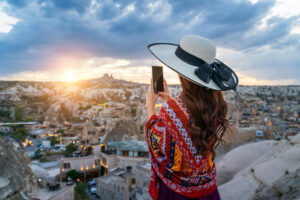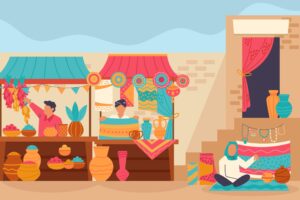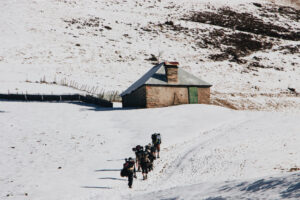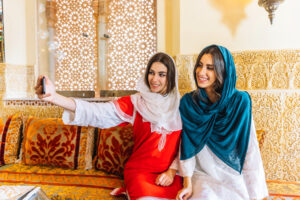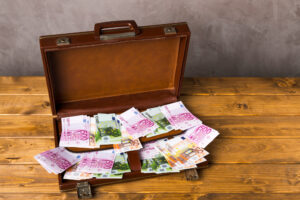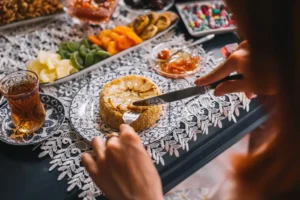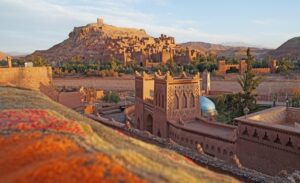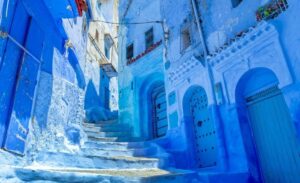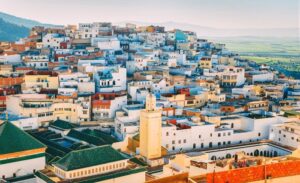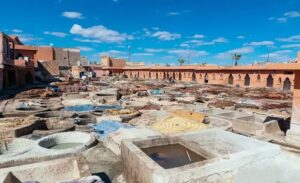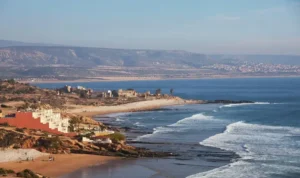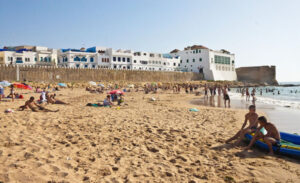No trip to Marrakech is complete without getting lost—quite literally—in its legendary souks. These vibrant, maze-like marketplaces are a sensory overload in the best way: think swirling scents of spices, colourful babouches (slippers), gleaming lanterns, and the rhythmic sound of haggling that echoes through the narrow alleyways.
Welcome to the soul of Morocco’s Red City.
A Brief History of Marrakech’s Souks
Originally open-air markets that sprang to life weekly or monthly as travelling merchants passed through, souks were the lifeblood of local trade. But Marrakech’s central location on old caravan routes transformed its souks into permanent, bustling trade hubs. Traders arrived daily, often with camel caravans, bringing goods from across Morocco, North and West Africa, and beyond.
This continuous flow of commerce is one reason the medina of Marrakech has so many gates—each one offering a way in for merchants and their wares. Bab Doukkala, for example, welcomed traders from El Jadida and the surrounding regions.
How the Souks Grew and Evolved
As the city’s population expanded, smaller community souks began popping up around neighbourhoods. These made daily shopping easier for locals, and as traders realised the potential, these mini-souks grew, eventually merging into the sprawling marketplace we know today.
Many souks became associated with specific trades. Artisans—such as leatherworkers, carpet weavers, and spice merchants—clustered together, a tradition that still exists. That’s why you’ll find specialized souks like the Carpet Souk near Rahba Lakdima or Souk Haddadine, the blacksmith’s quarter.
If you’re working with a Morocco tour agency, they’ll likely guide you through these artisan quarters so you don’t miss any hidden gems.
Navigating the Labyrinth
Unless you’re sticking to the streets near Jemaa el-Fnaa, prepare to get lost. The alleyways are narrow, overflowing with goods, and often covered—making orientation a challenge. But that’s part of the charm!
Navigation Tips:
Hire a licensed local guide or book through a Morocco tourism agency to explore with confidence.
Use GPS on your phone, or a good paper map from your hotel.
Landmarks help: Koutoubia Mosque’s towering minaret is a reliable reference point.
If you do ask for directions, approach women or shopkeepers rather than younger men, who may offer a guided “detour” that ends in commission-laden shopping stops.
What to Buy in Marrakech’s Souks
Whether you’re shopping for souvenirs or just browsing, the variety here is mind-blowing. Here are some treasures you can find:
Spices & teas – Aromatic blends to flavour your food and your memories.
Tagine pots & pottery – Great for serving Moroccan meals back home.
Traditional carpets & rugs – Including Berber and boucherouite styles.
Leather goods – From handmade belts to vibrant bags and babouches.
Jewellery & silverware – Both traditional Berber designs and modern styles.
Clothing – From kaftans and djellabas to scarves and pashminas.
Lanterns, teapots, instruments & artwork – Ideal for home décor lovers.
Popular Souks & Markets to Explore
Here’s where to go depending on what you’re after:
🕌 Djemaa el-Fnaa
The heart of the old city and its largest square, buzzing with life day and night. Great for street food, juices, and people-watching.
💍 Souk des Bijoutiers
For stunning jewellery and precious metal pieces.
🧵 Souk des Teinturiers
Watch fabrics and skins being dyed in brilliant hues.
🧤 Souk Semmarine
Your go-to for babouches and leather footwear.
🔨 Souk Haddadine
Less touristy, this blacksmith’s area gives insight into local metalwork traditions.
🧴 Souk el Attarine
Originally focused on scents and spices, now also rich in metalware and mirrors.
🧵 Mellah (Jewish Quarter)
Ideal for fabrics, accessories, and a dose of history.
🛍 Souk Cherifia
A tidier, more organised souk with boutique-style shops and modern artisan items.
🧳 Ensemble Artisanal
A government-backed artisan centre with fixed prices—a hassle-free place to watch craftspeople at work.
🪑 Bab El Khemis
A Thursday flea market where you can find anything from antique doors to bicycles and, yes, even the kitchen sink.
Safety & Shopping Tips
Keep your valuables secure – pickpocketing can happen in crowded spots.
Haggle with a smile – it’s expected and part of the fun.
Don’t agree on a price unless you’re ready to buy – walking away after agreeing is considered poor etiquette.
Take breaks – cafés and juice stalls are perfect respites from the chaos.
Make It More Than Just Shopping
Why not make your souk trip part of a deeper dive into Marrakech’s traditions?
Visit the tanneries to see how leather goods are made.
Watch artisans work in metal, wood, and textiles.
Sample local treats at Jemaa el-Fnaa in the evening—don’t miss the fresh orange juice.
Booking a tour with a Morocco tourism agency or Morocco tour agency can enhance this experience with authentic insights and access to artisan workshops.
Final Thoughts
The souks of Marrakech are more than just marketplaces—they’re living history, cultural melting pots, and irresistible labyrinths of colour, scent, and sound. Embrace the chaos, perfect your bargaining skills, and take a piece of Morocco home with you.

